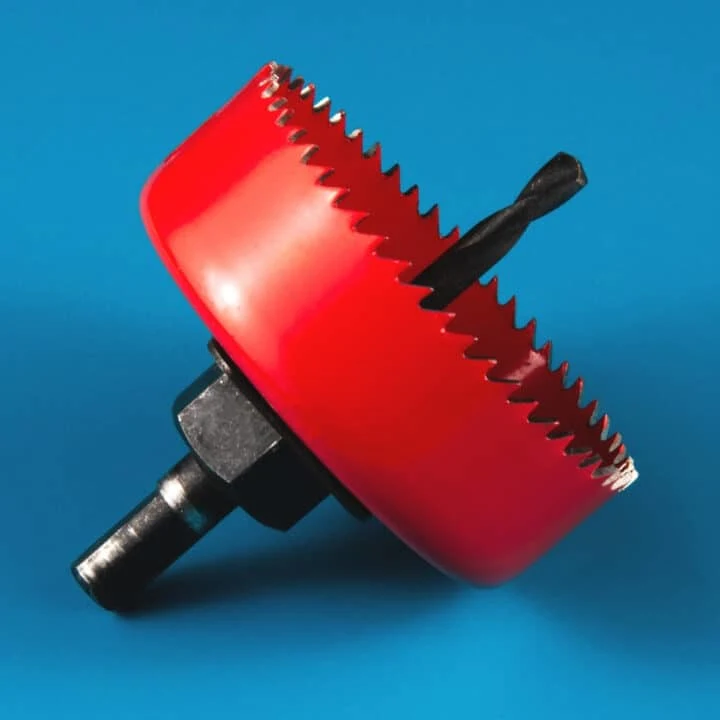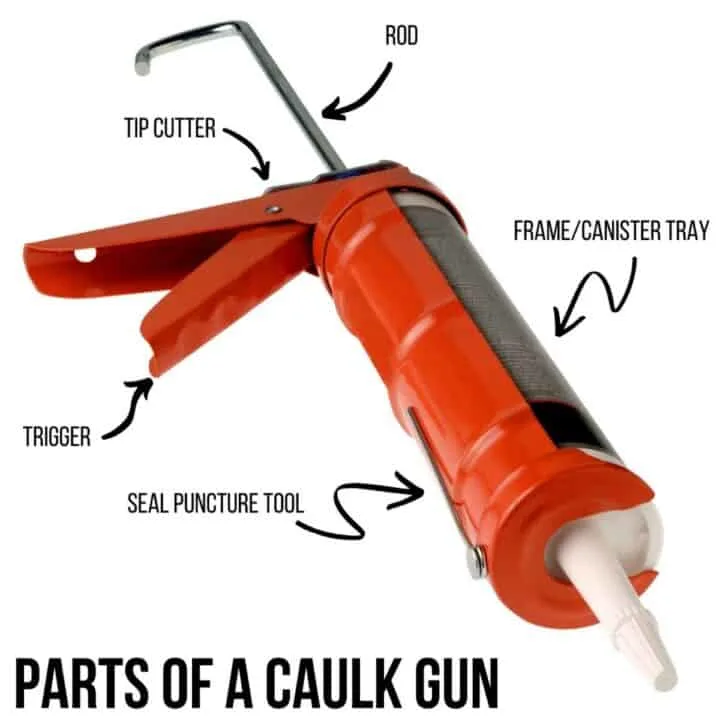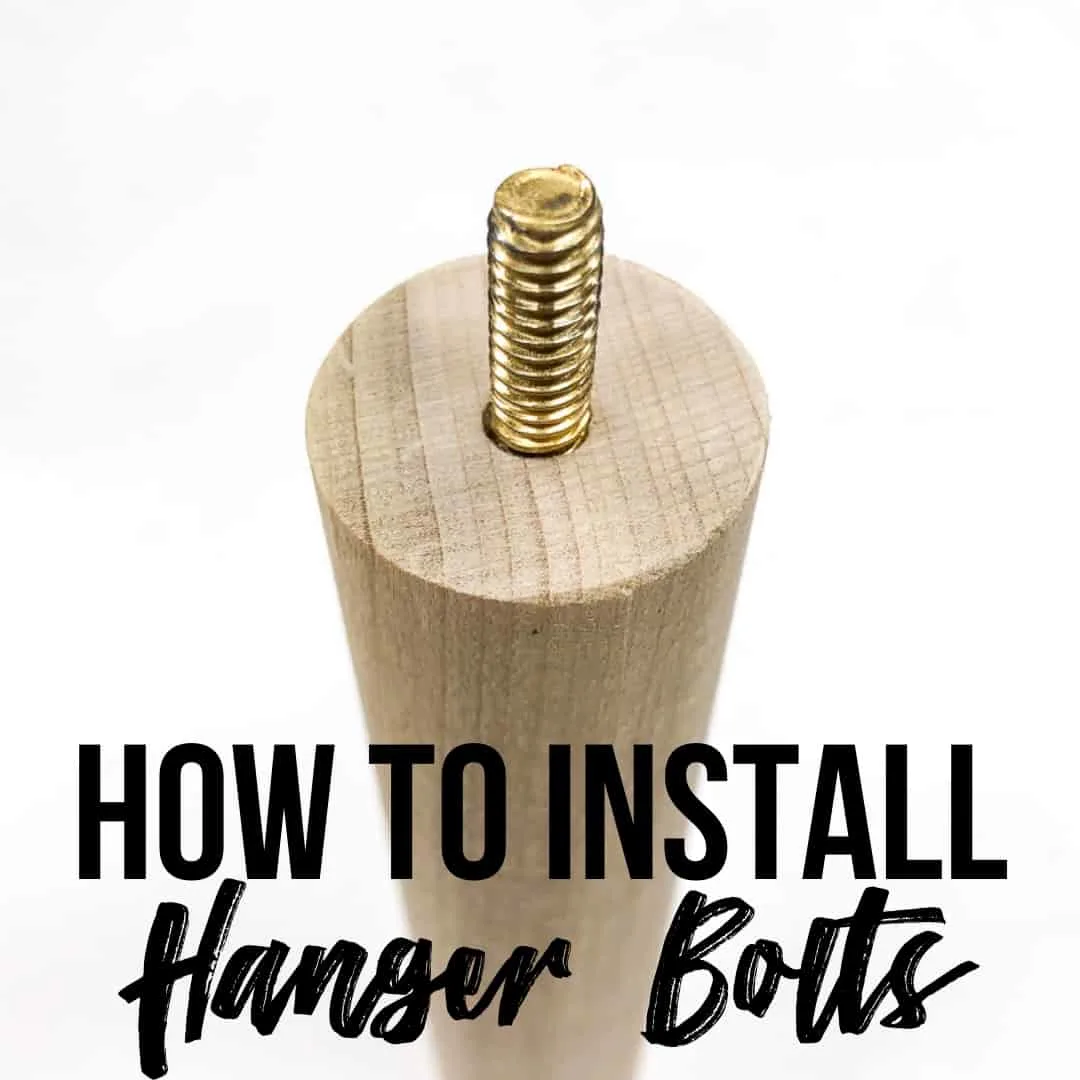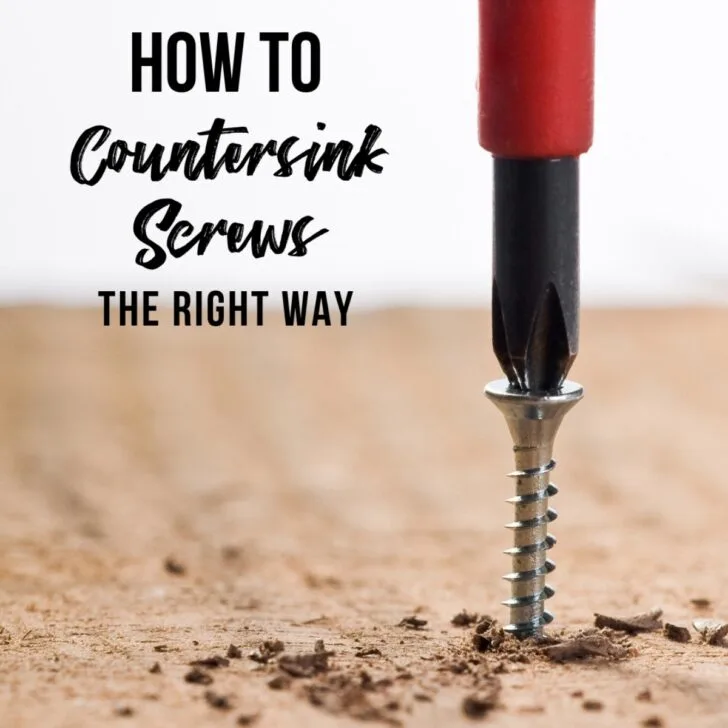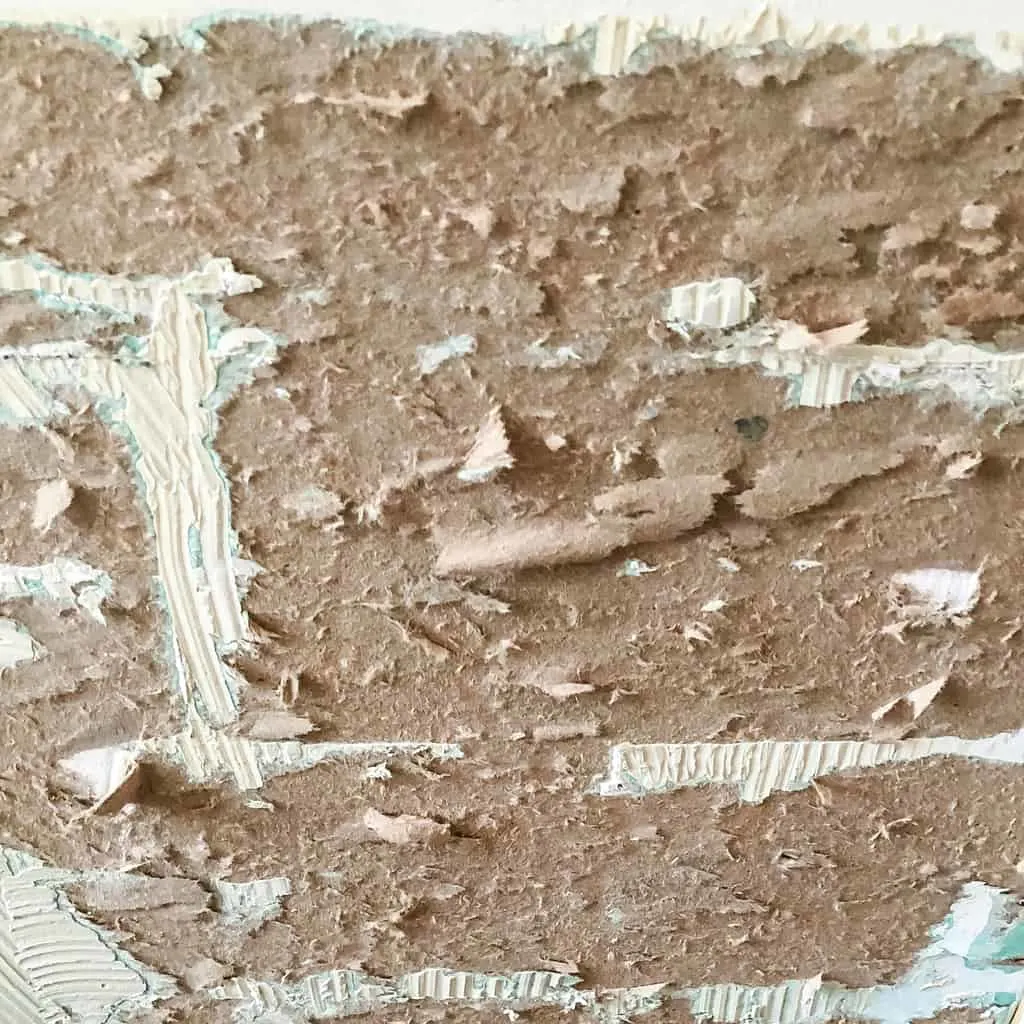Confused by all the different types of hollow wall anchors? In this guide, I'll show you when to use them and the pros and cons of each style.

It never fails. You're trying to hang something on the wall, and a stud is nowhere to be found. So what do you do?
Hollow wall anchors (or drywall anchors) support the fragile drywall and prevent the nail or screw from falling out. There are a ton of different options out there, so which one do you choose?
The best type of anchor will match your wall material to the weight of the item hanging from the wall. If you choose an anchor that's too big, you'll cause more damage than needed. However, if you use a hollow wall anchor that's too small, you might wake up to the sound of your picture frame smashing to the floor!
This guide will help you make the right choice!
When it's time to change up your decor, check out this tutorial on how to repair drywall anchor holes to get your walls smooth again!
This post contains affiliate links for your convenience. Purchases made through these links may earn me a small commission at no additional cost to you. Please visit my disclosures page for more information.
Why use hollow wall anchors?
Wall anchors are fasteners designed to increase the holding strength of a screw or hook in drywall or plaster walls. The space between the studs is hollow, and drywall or plaster is relatively soft and doesn’t hold a regular nail or screw very well by itself.

When should you use a drywall anchor? Use a wall anchor anytime you can’t find a stud in the right place, and you need to hang something that exceeds the holding capacity of a nail in the drywall. In general, anything bigger than a small picture frame may need an anchor for a secure hold.
No stud finder? Check out this tutorial for ways to find a stud without one!

Before hanging something on the wall, consider the weight of the item and whether it will be in a high traffic area.
Here are a few places to use a hollow wall anchor:
- Towel racks and hooks in the bathroom are a common failure point. Constant handling and heavy, wet towels can easily pull a screw out of a hollow wall without an anchor.
- Ceiling hooks need a strong anchor to hang plants near a window if there's not a joist nearby.
- Coat hooks are another area that may be easy to overlook. The rack itself may seem to hold just fine, but when it’s full of winter coats, it might not be up to par.
- TVs will always need wall anchors if the bracket is not secured to multiple studs.
- If you have a tall bookshelf or a hutch, you might want to anchor the top to the wall to prevent any chance of it falling forward, causing damage or injury.
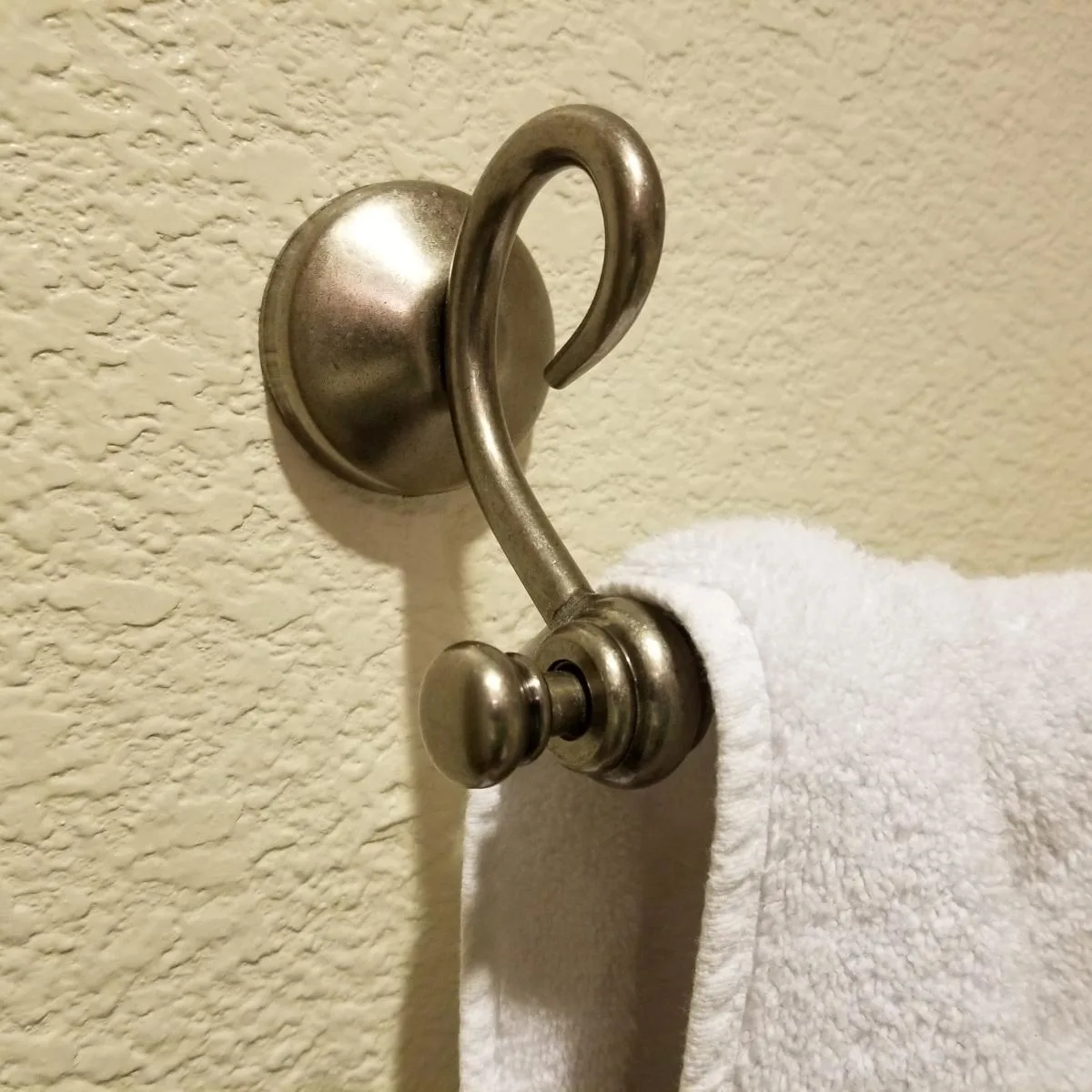
Plastic expansion drywall anchors
Plastic drywall anchors are the most common type. You’ve likely seen them come with various items you’ve purchased, such as coat hooks or frames. These usually provide a light hold of less than 40 pounds. They're inexpensive and easy to remove and patch later.
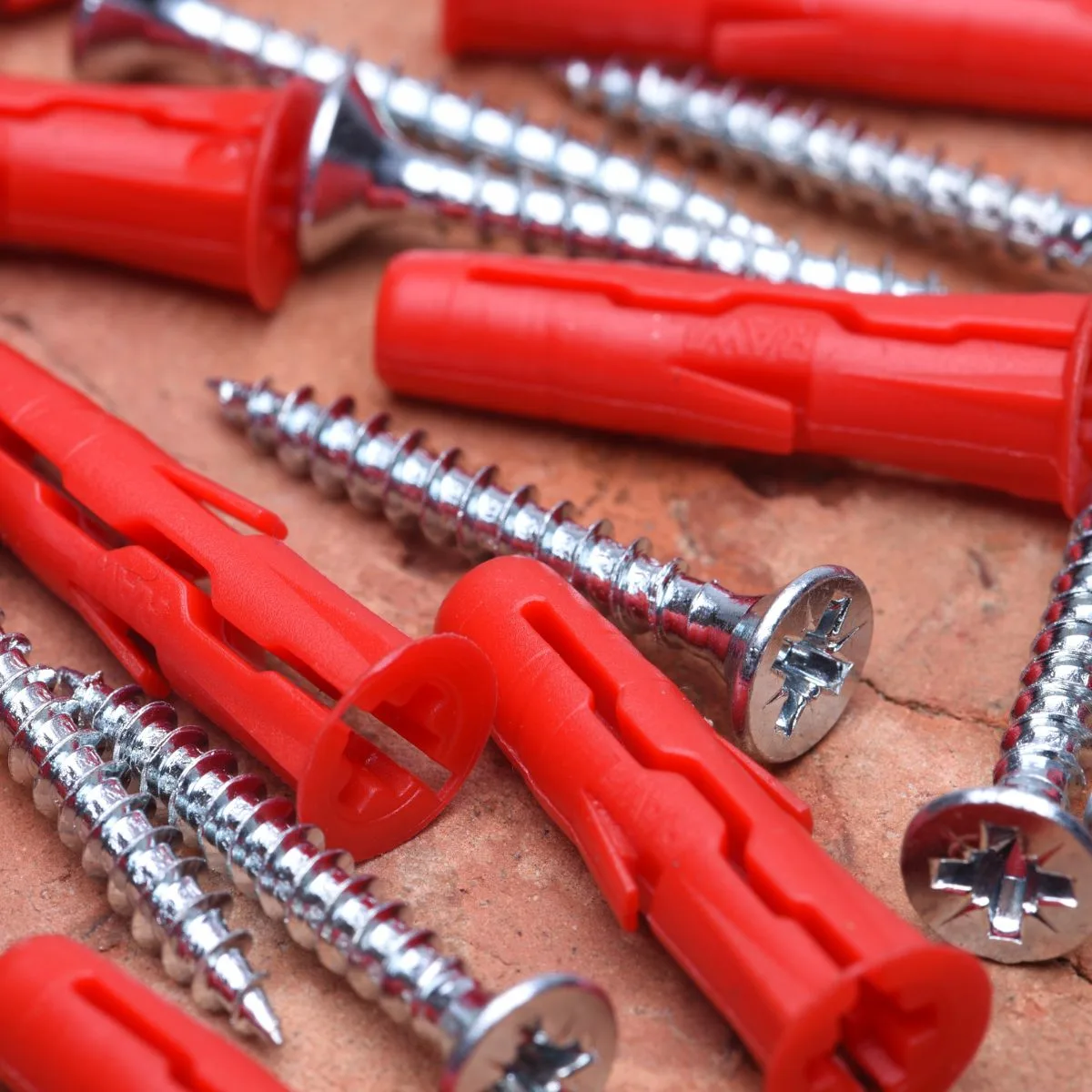
How do plastic anchors work?
First, you need to drill a pilot hole in the drywall. Your drill bit needs to match the diameter of the plastic expansion anchor. If the pilot hole is too large, you won’t get the holding power you’re looking for. Too small, and you'll just bend the anchor when you push it in.
After you’ve pre-drilled the hole, just tap the plastic anchor into the drywall. When the screw is twisted into the anchor, the plastic expands and forms a wedge on the other side to prevent it from pulling out easily.

Self drilling anchors
The self-drilling drywall anchor is another popular option. These anchors are essentially large screws with wide threads made to bite into drywall. Usually, they can hold around 50-70 pounds.
How do they work? These ones have a Philips drive on the end. You may have to predrill a small hole to get them started, but many will have a sharp point that pierces the drywall to get the screw going.
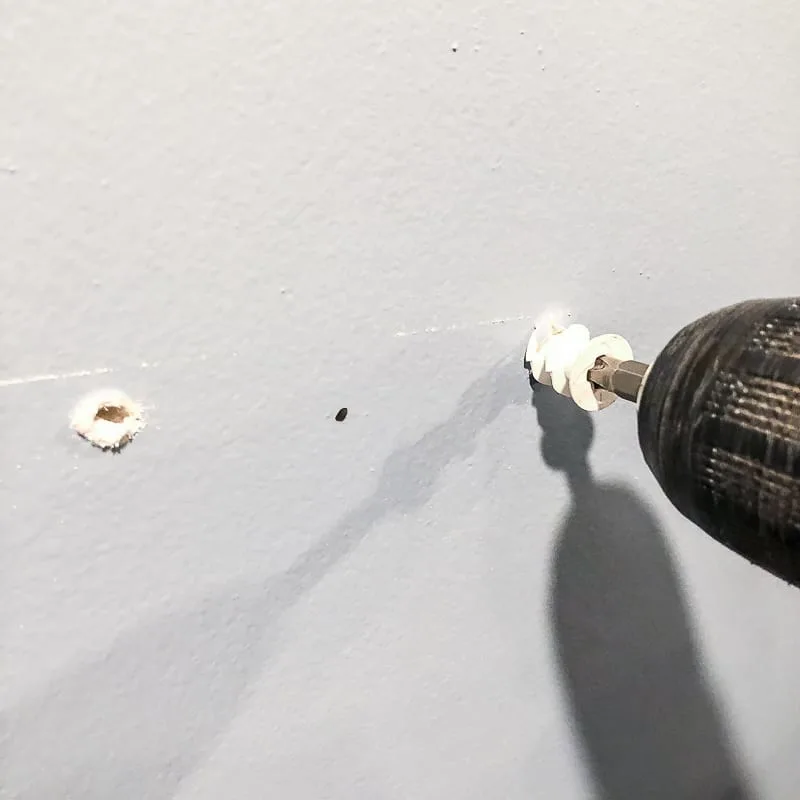
After you’ve inserted the anchor into the wall, you drive another screw into the center. The plastic will expand into the surrounding drywall, so you get a stronger hold than a regular screw in the wall.
I used these types of anchors in my DIY life edge floating shelf, and they've held up great! But like the plastic expansion drywall anchors, they're not meant to hold a lot of weight.
Toggle bolts
The toggle bolt drywall anchor is among the more heavy-duty hollow wall anchors, and is best used for heavy items. The typical toggle bolt folds up to fit through a pre-drilled hole and then springs into place inside the hollow wall. Check out my tutorial on how to install toggle bolts for more details.
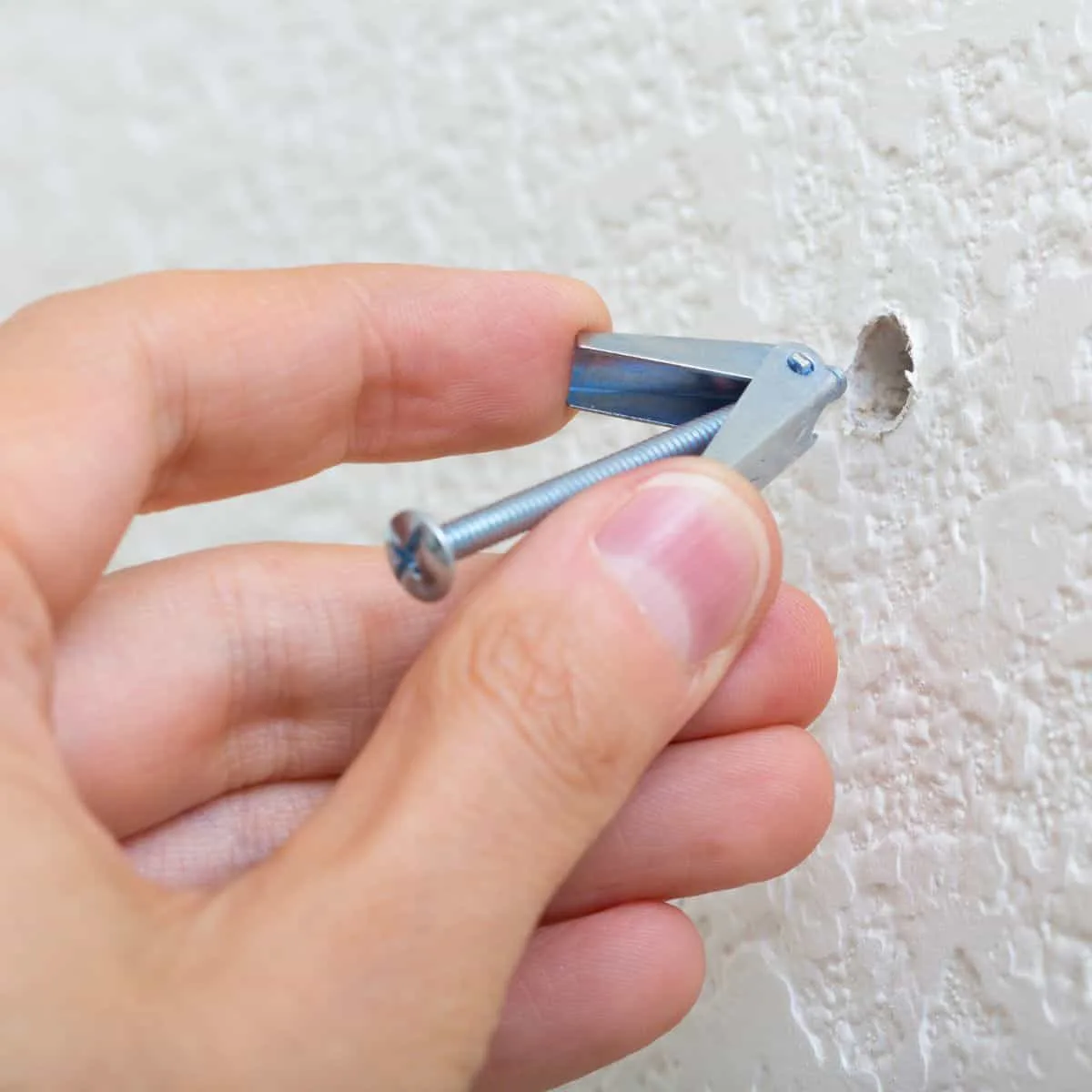
The metal wings pull flat against the inside of the wall as the screw is tightened, making it difficult to pull these anchors out of the wall accidentally. Some toggle bolts can hold up to 150 pounds when installed correctly.
These winged plastic anchors are similar to toggle bolts, but these are made of plastic instead of metal. These hollow wall anchors have plastic wings that fold out after you've placed them inside the pilot hole and tightened the mounting screw.
Molly bolts
Molly bolts are similar to toggle bolts, but they may require a special tool to expand the wings inside the wall. You can buy a kit with an assortment of different sizes along with the tool you'll need.
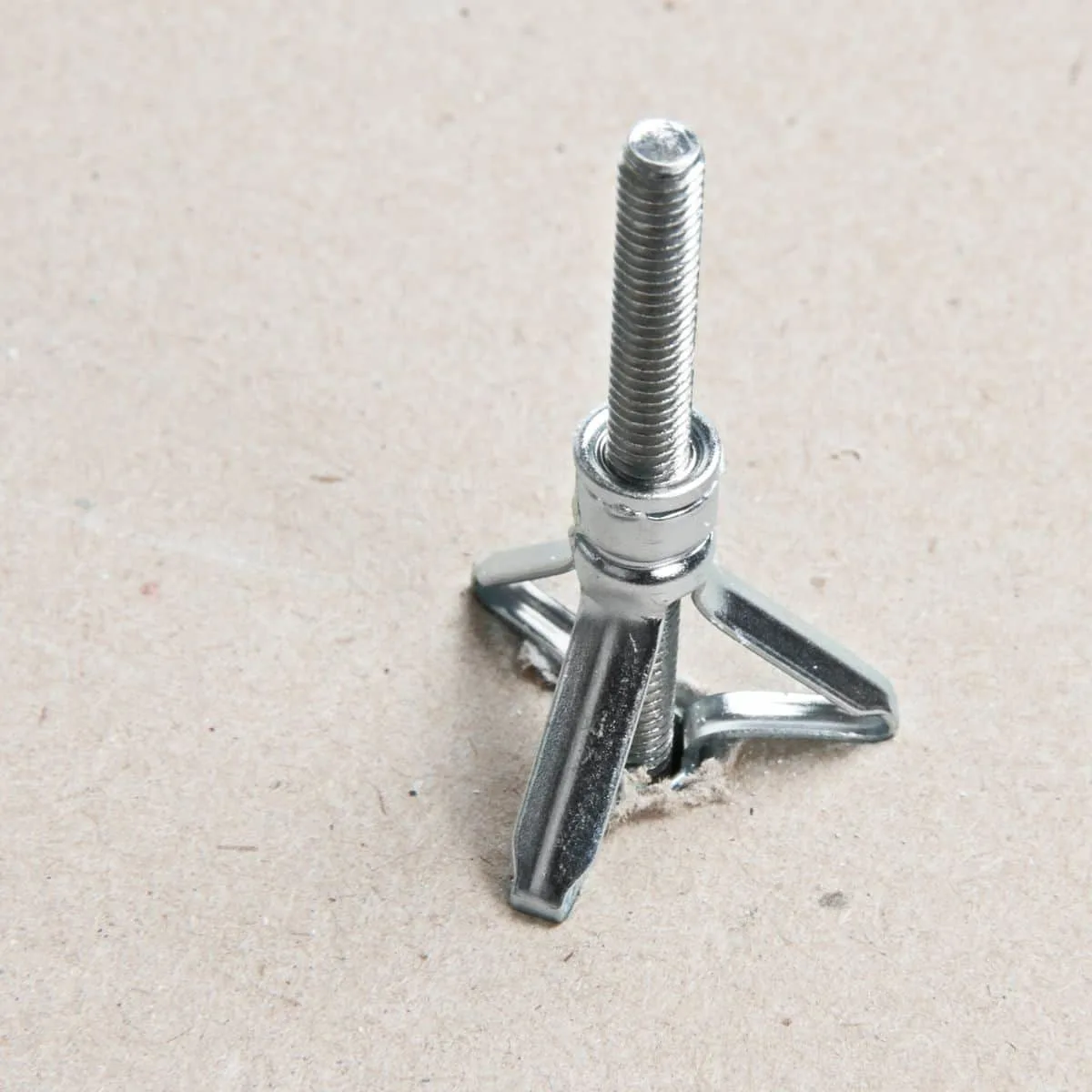
These metal hollow wall anchors look like bolts with a metal jacket surrounding the threads. After drilling a pilot hole, attach the bolt to the end of the tool and poke it into the hole. The tool will twist the screw and force the wings to flair out to hold the anchor in place.
Check out my in-depth comparison of molly bolts vs toggle bolts for more information on how these two types of anchors work!
No-drill drywall anchors
If you hate the mess of drywall dust that comes from pre-drilling holes, these little no-drill wall anchors are for you! They are made of thin metal, and have a holding weight of around 60 pounds. All you need to do is use a hammer to pound the flat anchor into place. Then, you can use a screwdriver to drive the screw in the middle to expand the metal flaps.

As the screw engages the center of the anchor, the wings spread within the drywall, creating an anchor that will be difficult to remove. These are fast, durable, effective, and pretty cheap! If you hate those plastic expansion anchors, this is a solid option!
Claw drywall anchors
These claw drywall anchors won’t hold a ton of weight, but they are super simple if you’re just looking to hold a picture frame or some other light object. With this style, all you need to do is mark the location of the fasteners and push them into place – you don’t even need a hammer!

The reason you don’t need a hammer is the small pins on the back are sharp enough pierce into the wall. However, they are engineered to balance and bear the weight, so once they’re in, they are very resistant to downward pressure so the picture doesn't fall down.
Monkey hook drywall anchors
These things are nifty! These are simple and effective, especially if you’re looking for something that will work fast, leave minimal holes, and not come loose. They hold up to 35 pounds.
How do monkey hook anchors work? Essentially, these are just long hooks with a particular shape. When weight is applied to the hook on the front side (shown below on the side with the wooden background), the top of the hook on the inside of the wall presses against the drywall.

All you do is press the sharp end into the drywall – you can do this with your hands! Then, continue threading the hook through until only the hook protrudes from the wall. The long "tail" of the hook curls up inside of the hollow wall to provide support.
I hope this article helped to clear up any confusion about the different types of hollow wall anchors on the market today! Which do you usually prefer for your projects? Let me know in the comments below!
Check out these other home improvement articles!



